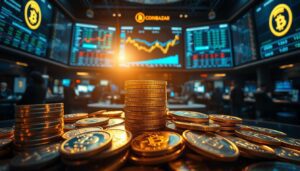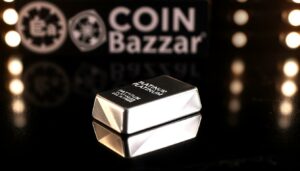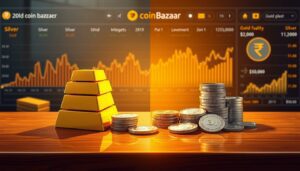Exclusive Deals & Trending Items
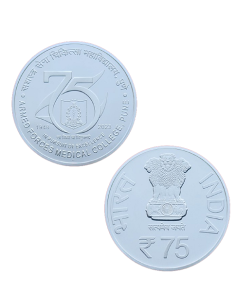


75 Rupees India Govt. Mint Platinum Jubilee Celebrations Of Armed Forces Medical College Pune Commemorative Coin (75 Rs.Coin)
Shop Now


75 Rupees India Govt. Mint Platinum Jubilee Celebrations Of Armed Forces Medical College Pune Commemorative Coin (75 Rs.Coin)
Shop NowYou might know that platinum prices have been changing a lot. This has caught the eye of many investors. Recent studies show big shifts in its value, making people think it might be underpriced.
Experts have different opinions on platinum’s potential. Its value is affected by many things in the market. Knowing where it stands now is important for smart investing.
Key Takeaways
- Recent market analysis shows significant fluctuations in platinum prices.
- Experts are divided on whether platinum is undervalued.
- Understanding market factors is key to making informed decisions.
- Platinum’s potential as an investment is a topic of ongoing debate.
- Investors are advised to stay informed about market trends.
The Current State of the Platinum Market
The platinum market is seeing a mix of rising demand and tight supply, causing prices to swing. As an investor, you might wonder what’s behind these price changes.
Recent Price Movements and Trends
Platinum prices jumped 36% in the second quarter. This was mainly because of more imports from China and less supply from South Africa. This big price shift has caught the eye of investors and analysts.
Key Factors Influencing Platinum Prices:
- Global economic trends
- Supply chain disruptions
- Rising demand from China
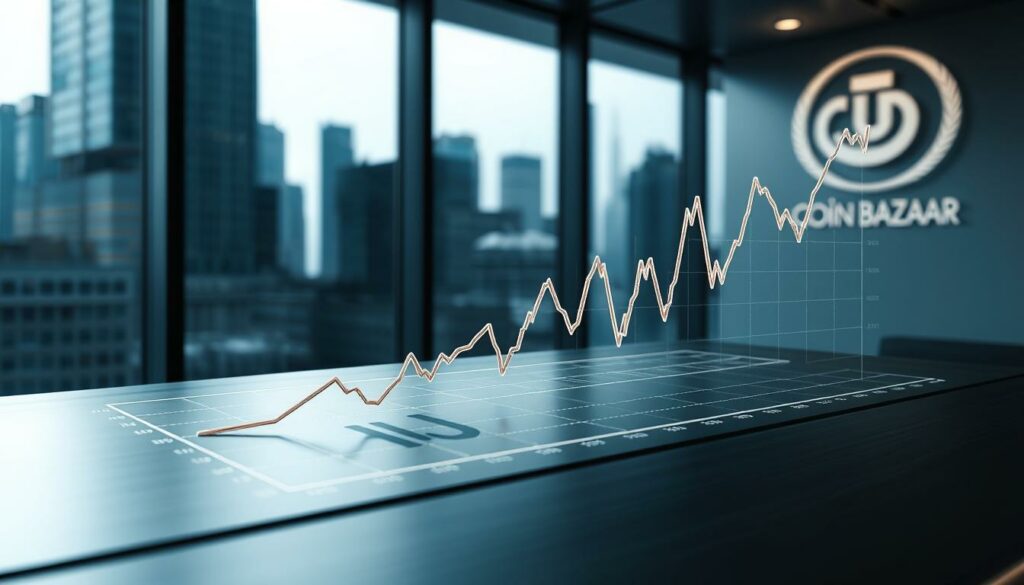

Supply and Demand Dynamics
Supply and demand are key in setting platinum prices. South Africa is a big supplier. Any issues there can greatly affect global prices.
| Region | Supply Change | Demand Change |
|---|---|---|
| South Africa | -10% | Stable |
| China | Stable | +15% |
This table shows recent supply and demand changes. It shows how less supply from South Africa and more demand from China have pushed up platinum prices.
Historical Perspective: Platinum’s Price Journey
To understand platinum prices today, we must look back. Historically, platinum was more valuable than gold. But lately, it’s often cheaper. This change shows how complex platinum group metals pricing can be.
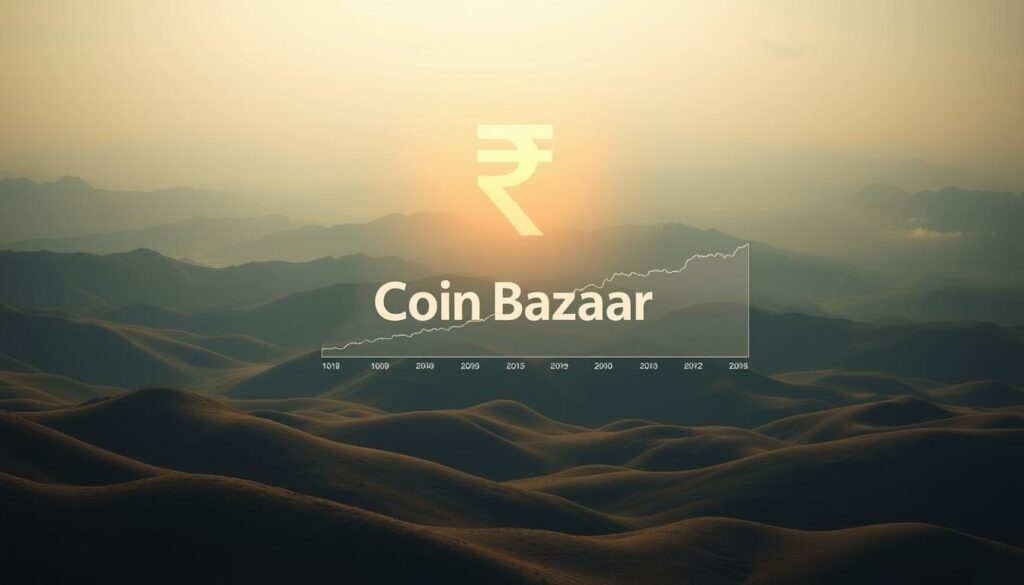

Price Comparison: Past Decades vs. Present
In the last few decades, platinum prices have changed a lot. In the 1980s and 1990s, it was mainly used in cars. The 2000s saw prices rise as investors and car makers wanted more of it.
Now, platinum prices are influenced by many things. This includes how much is available and new car technologies. Today, platinum prices are more linked to the world economy and car needs.
Key Historical Events That Impacted Platinum Prices
Some big events have changed platinum prices. The 2008 financial crisis, for example, made prices drop. This was because fewer people were buying cars and investors were worried.
The COVID-19 pandemic has also affected platinum prices. It messed up supply chains and changed how cars are made. Knowing about these events helps investors understand platinum group metals markets better.
Platinum vs. Other Precious Metals: A Comparative Analysis
When looking at platinum as an investment, it’s key to see how it stacks up against other precious metals. This comparison sheds light on market trends and possible investment chances.
The relationship between platinum and metals like gold, palladium, and silver is complex. It’s shaped by many market factors. Knowing these dynamics helps investors make smart choices.
Platinum-Gold Ratio: What It Tells Investors
The platinum-gold ratio is a key indicator for investors. It shows how much platinum costs compared to gold. A high ratio might mean platinum is cheaper than gold, which could be a good time to buy.
Platinum vs. Palladium: The Shifting Dynamics
The relationship between platinum and palladium is interesting, especially with the auto industry’s impact. Palladium is often linked to cars because it’s used in converters.
| Metal | Primary Use | Current Price Trend |
|---|---|---|
| Platinum | Catalytic converters, jewelry | Stable |
| Palladium | Catalytic converters | Volatile |
| Gold | Jewelry, investment | Stable |
| Silver | Industrial applications, jewelry | Volatile |
Platinum vs. Silver: Investment Considerations
When comparing platinum to silver, investors need to think about what drives demand for each. Platinum is mainly used in converters and jewelry. Silver, on the other hand, is used in many industrial areas.
Understanding these differences helps investors make better choices for their portfolios.
The Unique Properties of Platinum
Platinum is more than just a precious metal. It has special properties that make it very valuable in many industries. Its unique qualities set it apart from other metals.
Physical and Chemical Properties
Platinum stands out for its physical and chemical properties. It has a high melting point and doesn’t corrode easily. It also doesn’t react with air, making it very durable.
These traits make platinum perfect for many uses. For example, it’s used in car catalytic converters to cut down emissions. It’s also great for electronics because it conducts electricity well.
Plus, platinum can handle high temperatures without losing its properties. This is a big plus for many applications.
Rarity and Global Distribution
Platinum is a rare metal, with less available than other precious metals. South Africa has about 60-75% of the world’s platinum reserves. This makes it a key player in the platinum market.
The rarity of platinum, along with its special properties, boosts its value and demand. The global supply of platinum is limited, with major deposits in South Africa and Russia. This can affect how available and priced platinum is worldwide.
Industrial Applications Driving Platinum Demand
Platinum is key in many industries because of its special properties. It has a high melting point and resists corrosion. It also helps in chemical reactions, making it very useful.
Automotive Industry: Catalytic Converters
The car industry uses a lot of platinum, mainly for catalytic converters. These converters are vital for cutting down harmful emissions. Platinum’s catalytic properties make it perfect for this job, helping to clean exhaust gases.
Electronics and Technology Applications
In electronics and tech, platinum is prized for its ability to conduct and resist corrosion. It’s used in making hard disk drives and in special glass for LCD screens.
Medical and Pharmaceutical Uses
In medicine, platinum plays a big role, especially in cancer treatment. Drugs like cisplatin, which contain platinum, help fight cancer. Its safety and resistance to corrosion also make it good for medical implants.
Platinum’s wide range of uses shows its critical role and the ongoing demand for it. As technology improves and we seek cleaner, more efficient ways to work and travel, platinum’s importance will only grow.
Platinum Jewelry Market in India and Globally
The demand for platinum jewelry is growing worldwide, especially in India. This growth is due to cultural and economic factors. The market for platinum jewelry is a big part of the overall demand for platinum.
Global Platinum Jewelry Trends
The global market for platinum jewelry is moving towards more complex designs. Platinum’s rarity and durability
Indian Platinum Jewelry Market
In India, platinum jewelry is very important, especially for weddings and other big events. It’s seen as a symbol of purity, elegance, and status.
Cultural Significance in Indian Weddings
Platinum jewelry is chosen for Indian weddings because of its durability and rarity. It represents a lifelong commitment. It’s also a sign of the family’s wealth.
Growing Popularity Among Young Indian Consumers
Young people in India are starting to like platinum jewelry more. They find it appealing and influenced by global trends. They want unique and exclusive designs.
Price Comparison: Platinum vs. Gold Jewelry in India
| Metal | Price per Gram (INR) | Making Charges (INR) |
|---|---|---|
| Platinum | 2,500 | 500 |
| Gold (24K) | 5,000 | 300 |
Comparing platinum and gold jewelry in India shows platinum is pricier. But its durability and rarity make it a good investment.
Expert Opinions: Is Platinum Truly Undervalued?
Investors are looking closely at the platinum market. Experts from different fields share their thoughts. This includes bank analysts, mining leaders, and independent analysts.
Investment Bank Analysts’ Perspectives
Bank analysts keep a close eye on platinum. Goldman Sachs says platinum is a good buy. It has strong demand and low prices compared to other metals.
They believe platinum’s price doesn’t match its true value. This makes it a great investment choice.
“Platinum’s unique combination of industrial demand and scarcity makes it an appealing investment, especially when compared to other precious metals.” – Goldman Sachs Analyst
Mining Industry Executives’ Views
Mining leaders focus on how much is being mined. Anglo American Platinum’s CEO says we’re not mining enough to meet demand. This could lead to a shortage.
Production has gone down because of mining issues and rules to protect the environment.
| Year | Platinum Production (Tonnes) | Change (%) |
|---|---|---|
| 2020 | 180 | -5% |
| 2021 | 175 | -2.8% |
| 2022 | 170 | -2.9% |
Independent Market Analysts’ Assessments
Independent analysts look at both sides of the market. Metals Focus reports that car demand is down but jewelry demand in India is up. This mix of demand shows platinum is a good buy.
In summary, experts think platinum is a good deal. It has strong demand, supply issues, and is attractive to investors. Knowing this can help you make a smart choice in the platinum market.
Factors Contributing to Platinum’s Current Valuation
The value of platinum today is shaped by many factors. If you’re thinking about investing in this metal, knowing these factors is key.
Several important elements are at work. On one side, supply constraints play a big role. Mining production issues in major countries can cause shortages, affecting prices.
Supply Constraints: Mining Production Issues
Mining problems, like safety issues and operational challenges, limit supply. For example, safety concerns have caused mines to close temporarily, reducing supply further.
Experts say, “The platinum market is very sensitive to supply problems. These can cause big price swings.”
“Supply chain disruptions, especially in South Africa, greatly affect platinum availability and prices.” –
Demand Factors: Industrial and Investment
Platinum’s demand comes from both industrial and investment needs. The automotive industry uses a lot of platinum for catalytic converters. Investment demand, in the form of bars, coins, or ETFs, also affects its value.
Investors see platinum as a safe-haven asset, like gold. One investor said, “Platinum’s role as an industrial metal and a value store makes it appealing during economic uncertainty.”
Macroeconomic Influences on Platinum Prices
Macroeconomic factors, like currency fluctuations, interest rates, and global economic health, also shape platinum prices. For instance, a strong dollar can make platinum more expensive for non-dollar holders, reducing demand.
It’s vital for investors to grasp these macroeconomic impacts. As the world economy changes, these factors will keep influencing platinum’s value.
The Impact of Electric Vehicles on Platinum’s Future
The world is moving towards electric vehicles (EVs), changing platinum’s future. The car industry, a big user of platinum, is changing. This could impact how much platinum is needed.
Declining Demand from Traditional Automotive Sector
Electric vehicles are becoming more popular, which means less need for platinum in cars. EVs don’t need catalytic converters, a big use of platinum. Experts say this could lead to a big drop in platinum demand from cars.
New Opportunities: Fuel Cells and Green Hydrogen
Even with EVs, new chances for platinum are coming. Fuel cells and green hydrogen use platinum, offering a clean energy option. “Fuel cells are a big chance for platinum demand,” an analyst notes.
Platinum in fuel cells and green hydrogen could help make up for lost demand in cars.
Thinking about these changes is key when looking at investing in platinum. The move to clean energy brings both challenges and chances for platinum. Keeping up with platinum demand changes is vital for investors.
Platinum Mining: Global Production and Challenges
Platinum mining is key in the global precious metals market. It faces unique challenges and opportunities. You will learn about the industry’s details, from major producers to environmental and cost issues.
Major Platinum Producing Countries
South Africa leads in platinum production, making up most of the world’s output. Other big players are Zimbabwe, Russia, and Canada. These countries have large platinum reserves and the needed mining infrastructure.
Environmental and Social Considerations
Platinum mining, like other mining, affects the environment and society. It causes land damage, water pollution, and displaces communities. Mining companies are working to be more sustainable and involve local people.
Production Costs and Profitability
Platinum production costs vary a lot, depending on ore quality, labor, and energy prices. Companies aim to stay profitable in a changing market. Knowing these economic factors helps understand the industry’s health.
In summary, platinum mining is a complex field with many challenges and chances. It’s important to grasp the global production, environmental, social, and cost aspects for all involved.
Investing in Platinum: Options for Indian Investors
Indian investors have many choices for platinum investment. You can pick from physical assets or financial instruments. Knowing these options is key to diversifying your portfolio.
Physical Platinum: Coins, Bars, and Jewelry
Buying physical platinum is a solid way to own this metal. You can choose from coins, bars, or jewelry. Coins and bars are great for straightforward investing. Jewelry adds beauty to your investment.
In India, you can buy physical platinum from trusted jewelers, banks, and online platforms. Make sure to buy from a reliable source to avoid fake products.
Platinum ETFs and Mutual Funds Available in India
For a liquid and diversified investment, consider Platinum ETFs and Mutual Funds. These financial tools track platinum prices. They let you invest without holding the metal physically.
| Investment Product | Description | Benefits |
|---|---|---|
| Platinum ETFs | Tracks platinum prices | Liquidity, diversification |
| Platinum Mutual Funds | Invests in platinum-related assets | Diversification, professional management |
Platinum Mining Stocks Accessible to Indian Investors
Investing in platinum mining stocks is another option. By buying shares in mining companies, you can profit from rising platinum prices. Research the company’s finances and mining operations before investing.
Key Considerations: Look at the company’s costs, profits, and growth chances. Make sure your investment fits your financial goals and risk level.
Platinum Market Forecast: What to Expect in the Coming Years
The platinum market is set for big changes soon. Investors and experts need to watch trends and disruptors closely. This will help them make smart choices.
Short-term Price Projections
Platinum prices will see a moderate rise in the short term. This is because demand from cars, especially for catalytic converters, is growing.
Market trends show platinum prices are recovering. This is thanks to more car sales and industrial use.
Long-term Outlook for Platinum
Platinum is key for cleaner energy, especially in fuel cells. As hydrogen fuel cells become more popular, platinum demand will rise.
Investors should watch for tech breakthroughs and rule changes. These could change platinum demand.
Potential Market Disruptors to Watch
Several things could shake up the platinum market. These include new car rules, tech progress, and global events.
| Disruptor | Potential Impact | Likelihood |
|---|---|---|
| Stricter emissions regulations | Increase in demand for platinum | High |
| Advancements in fuel cell technology | Significant increase in platinum demand | Medium |
| Geopolitical tensions | Supply chain disruptions | Medium |
Knowing about these disruptors can guide investors. It helps them make better choices for their platinum investments.
How to Evaluate if Platinum Fits Your Investment Portfolio
Thinking about investing in platinum? It’s key to check if it’s right for your portfolio. Look at different factors that could affect platinum’s performance and your investment plan.
Risk Assessment and Portfolio Allocation
First, understand the risks of investing in platinum. Its price can change a lot because of supply and demand, world events, and the economy. Think about adding platinum to your portfolio, but make sure it fits your risk level.
- Look at your current investments and how much risk you can handle.
- Think about how platinum can help spread out your investments.
- Consider how market ups and downs might affect platinum’s price.
Timing Your Platinum Investments
When to invest in platinum matters a lot. Market trends, economic signs, and demand for platinum can change its price. Think about the current market and your investment goals before you invest.
- Keep an eye on market trends and economic signs.
- Look at how demand for platinum might affect its price.
- Make sure your investment timing matches your financial goals.
Conclusion: The Future Value Proposition of Platinum
Platinum’s future value will depend on several factors. These include industrial demand, investment interest, and market trends. Its unique properties make it valuable in many areas, like cars, electronics, and jewelry.
Experts see platinum as a good investment because it’s currently undervalued. The growth of fuel cells and green hydrogen could create new demand for platinum. This could help balance out the decline in traditional car uses.
When investing in platinum, it’s important to know about supply and demand. Also, understanding big economic changes is key. Whether you choose physical platinum, ETFs, or mining stocks, knowing your goals and risk level is crucial.
As the platinum market changes, staying up-to-date is vital. This will help you make the most of your investment.











